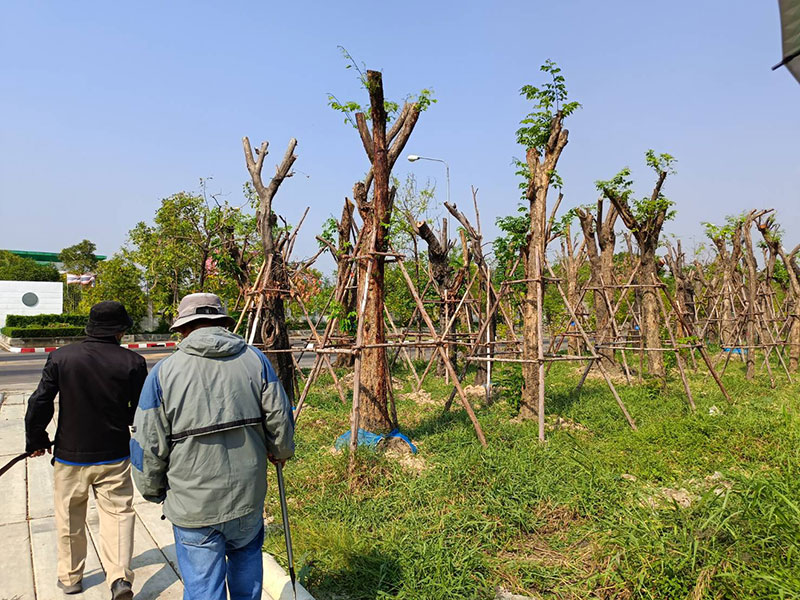Resilient Urban Centres and Surrounds (RUCaS)
On Nut Urban Forest Park
Bangkok, Thailand
Early plantings for the On Nut Forest Park
Indicative Plan (not to scale and illustrative only)
The vision for this case study is transforming a former urban waste transfer site into a multifunctional forest and wetland park that provides safe and inclusive recreational, economic and environmental benefits.
Situated between the CBD and Suvarnabhumi International Airport, the On Nut area has a growing commercial and residential community. The district is increasingly becoming a favoured place to live, partly because it is more affordable than other areas of central Bangkok. However, areas close to the forest park site include informal settlements, where residents have no security of tenure and experience the impacts of the waste transfer and recycling site. Residents in the area currently experience odour and air quality issues. Given experiences in other places and the history of the waste management in the precinct, there is also the potential for future leachate, gas emission as well as land and water pollution issues.
Working with PTT GC and Kasetsart University, the Bangkok Metropolitan Administration (BMA) has converted a former urban waste transfer site located at On Nut into an urban forest park. The wetland and forest park envisages extending the values of these investments to wider outcomes for biodiversity and visitor use.
The case study considers 3 scenarios:
- Scenario A involves removing waste, covering any remnant rubbish with soil, planning 45,000 trees, building open water ponds (to provide amenity and biodiversity and retain rainfall runoff) and construction a walking track around the outside of the park.
- Scenario A+ further investigates the site’s history, soil, groundwater and sampling, and then considering adding further biodiversity, water treatment, recreation, education and accessibility elements.
- Scenario B involves visioning a fully remediated site and adding elements such as a chain of constructed wetlands (to treat runoff and manage any leachate), diversifying tree plantings, incorporating a terraced ecotone design (e.g. swamp forest, terrestrial forest and pathways) and incorporating feminist and inclusive universal design processes and principles.
The Forest Park team specifically requested a focus on an economic assessment of options. Access points, pathways and viewing platforms, onsite security and amenities, and recreational space will be designed to advance the interests and needs of young and older people, women and families, and people living with disability.
Extending accessible green and blue space within the city will provide health benefits for local residents – including the poor, those without land access and title in informal settlements, and other marginalised households and community members within and around this area.
Overall vision for On Nut
Technical section (not to scale and illustration only)
The CRCWSC has produced research, guidelines and
tools related to the following topics:
Integrated Urban Flood
Management
Climate change
mitigation
Community
engagement
Economics and
business case




